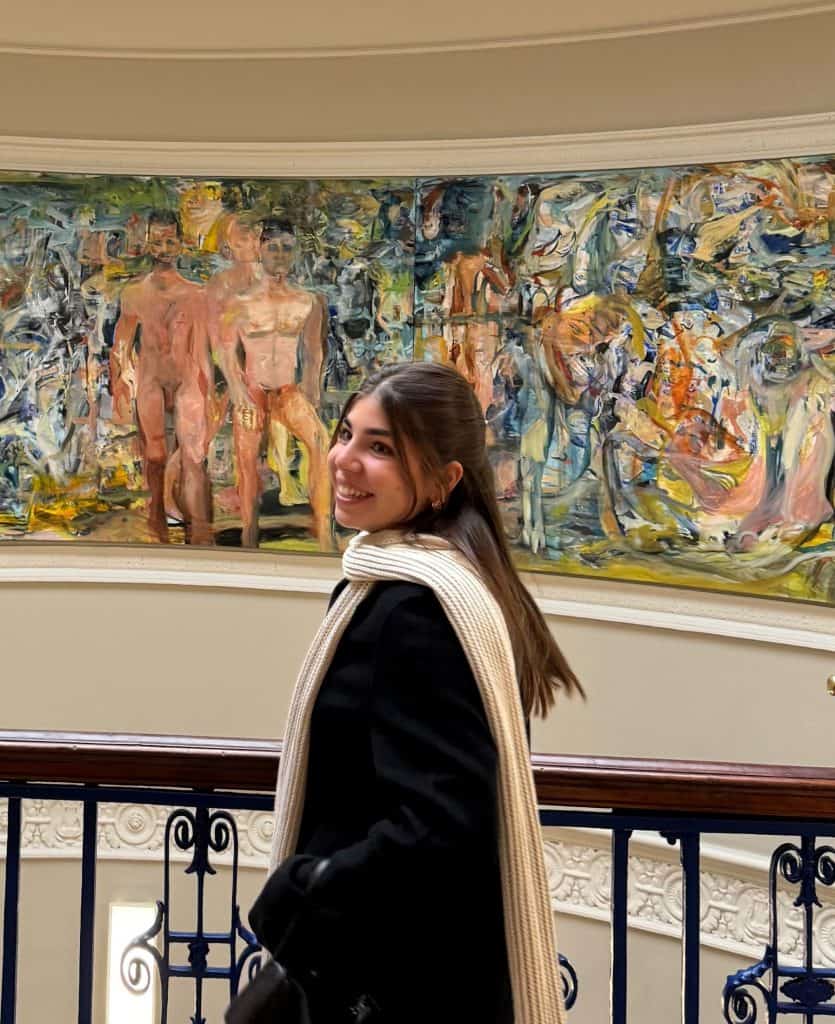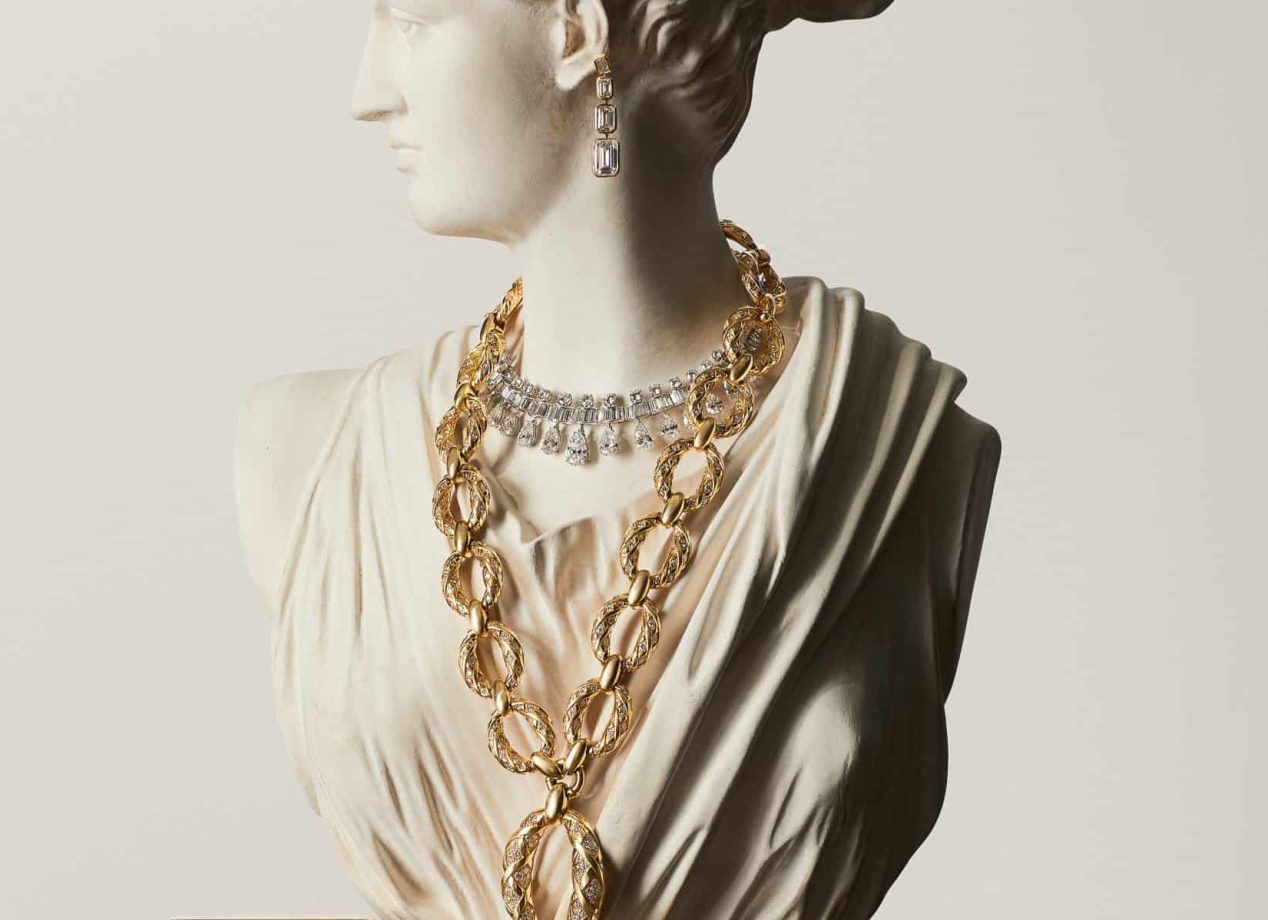For Karla Akpinar, the MA Luxury Business program at Sotheby’s Institute of Art was a springboard into the multifaceted world of luxury. Her work placement at Fenwick offered the opportunity to transform classroom insights into real-world brand storytelling, deepening her passion for hospitality and the luxury consumer experience.
 How would you describe your Sotheby’s Institute experience?
How would you describe your Sotheby’s Institute experience?
My time at Sotheby’s Institute was deeply enriching, and a big part of that was thanks to the incredible professors. Their expertise, support, and ability to connect theory with real-world examples made the learning experience truly engaging and inspiring. I loved how the MA Luxury Business program covered a wide range of luxury sectors—from hospitality and jewelry to fashion and art—and explored the evolving definition of luxury across cultures and time periods. Being in London really enhanced the experience, as the city itself is a global hub for art, fashion, and luxury.
I especially appreciated the immersive learning. We had the opportunity to visit incredible places like the Victoria and Albert Museum (V&A) in London, Rathfinny Wine Estate in Sussex, Van Cleef & Arpels School in Paris, and Mandarin Oriental in Milan. These experiences offered invaluable insight into how luxury is created, curated, and communicated in different contexts. In addition to the site visits, we were also joined by a range of guest speakers from across the luxury sectors, including areas like jewelry and hospitality, who shared valuable insights into their careers, challenges, and lessons learned—adding a real-world dimension that made the learning feel even more relevant and inspiring.
I also really enjoyed taking electives from other programs—my course on art forgery, for example, was especially eye-opening and gave me a new lens through which to view authenticity in the luxury space.
How did your work placement complement your academic studies at Sotheby’s Institute of Art?
My placement at Fenwick complemented my studies in such a meaningful way. While the coursework gave me a strong theoretical foundation, my role in buying and merchandising for food and beverage allowed me to see how that theory translates into real-world brand strategy and consumer engagement.
Having previously worked in various departments of a hotel as a management trainee, I already had some experience in food and beverage operations—things like storage cycles, supplier management, and adapting to price or tax fluctuations. But buying and merchandising was completely new to me. It challenged me to think differently about consumer behavior, product placement, and how storytelling plays a role in everything from packaging to in-store displays.
Can you share a specific project or task during your placement that enhanced your understanding of the art or luxury industries?
During my time at Fenwick, I had the opportunity to contribute to the rebranding of their own-brand food products and hampers, which was one of the most eye-opening and rewarding parts of the placement. I was able to observe and support the process as they made key decisions about which products to discontinue, which new lines to introduce, and how to reposition the brand visually and strategically.
It was fascinating to see how much thought went into every detail—from renaming products and redesigning packaging to sourcing new jars, boxes, and labels that aligned with both the brand identity and food safety regulations. Even something as seemingly small as font size had to be carefully considered to meet legal requirements while still maintaining visual appeal. I also gained insight into the creative process behind design choices—such as selecting packaging colours, ribbon textures, and tones that would reinforce the brand’s positioning while remaining visually cohesive across product lines.
This experience showed me how much precision and cross-functional collaboration is required in luxury retail, where the product is not just about taste or function, but about presentation, experience, and storytelling. It broadened my perspective on what goes into building a luxury brand and helped me appreciate how creativity, compliance, and strategy must align to create something that feels both elevated and authentic to consumers.
What new skills or insights did you acquire through your placement that you hadn't anticipated?
One of the most surprising insights was realizing just how complex and detailed every part of the buying process is. From visiting a jam supplier in York and attending a wine fair, to observing how the layout of the wine and sweets section was curated at the Newcastle flagship, I saw the immense effort behind each decision. I hadn’t anticipated how much creativity and precision goes into every choice—from sourcing to presentation—and how much those decisions impact the overall brand narrative.
I also discovered how much I enjoyed buying and merchandising for food and beverage. It was such a dynamic and enjoyable area to work in—there was always something new to explore, and trying different food samples made the experience even more fun. Beyond the enjoyment, the placement was truly eye-opening and broadened my vision of the industry. It helped me develop a sharper eye for detail, improve my analytical thinking, and gain confidence working cross-functionally within a team. It gave me a much deeper appreciation for how behind-the-scenes strategy directly shapes the customer experience.
In what ways did the work placement influence your perspective on potential career paths within the art world?
The work placement expanded my understanding of the many dynamic career paths that intersect with the worlds of luxury, design, and the creative industries. Working in food and beverage buying and merchandising at Fenwick highlighted how much thought, storytelling, and strategic decision-making go into shaping customer experience—particularly in hospitality and retail.
I saw firsthand how elements like product selection, presentation, and brand voice work together to create a cohesive identity, one that resonates emotionally with consumers. It helped me recognize that careers focused on crafting meaningful experiences—whether in hospitality, retail, or lifestyle branding— are deeply creative, intellectually engaging, and aligned with my interest in strategic thinking, consumer insight, and the creative processes that shape brand identity.
This realization played a key role in my decision to continue in the hospitality industry, where I’m now working professionally. Much of what I do today draws directly from what I observed and learned at Fenwick—from consumer insight and visual merchandising to brand positioning—showing just how interconnected these industries truly are.
Can you describe how the placement helped you build professional relationships or expand your network within the art sector?
Through the placement, I had the opportunity to meet professionals across multiple sectors—from producers and buyers to store designers and brand strategists. At Fenwick, I was fortunate to work closely with Mel Cassell, the Buying Manager, and Chiara Battiselli, the Buyer for Food and Beverage. Both were incredibly kind, knowledgeable, and supportive throughout my experience. I also received regular check-ins from Amy Limmer, Fenwick’s Talent Acquisition Manager, which made the entire placement feel very well-supported.
These relationships gave me meaningful insight, encouragement, and a stronger sense of community both at Fenwick and in the professional world. I especially appreciated how the team made an effort to include me—from involving me in their day-to-day operations to organizing regular talks with different colleagues to discuss career paths and offer guidance. It was a genuinely welcoming and inspiring environment, and it definitely helped build my confidence. As an international student, it also gave me a much clearer understanding of the professional landscape in the UK. This experience has stayed with me as I move forward in my career.
What advice would you give to future Sotheby’s Institute students, and how can they make the most of the Work Placement experience?
I would absolutely recommend taking full advantage of the work placement—it’s a rare opportunity to apply what you’ve learned in a real-world setting and to observe how companies operate from the inside. Regardless of the industry and role of your placement, this experience can offer valuable insight and help you better understand your strengths, preferences, and professional goals.
Take time to observe how teams communicate, how decisions are made, and how brand values are reflected in daily operations. Ask questions, build relationships, and view the experience as a way to not only grow your network but also gain clarity about the kind of environment you thrive in. Especially for international students, it’s a great way to gain familiarity with the professional culture in the UK and begin building a long-term foundation.
Above all, it’s a genuinely fun experience—and one where you’ll have the chance to learn, explore, and grow in ways that can truly shape your future.
